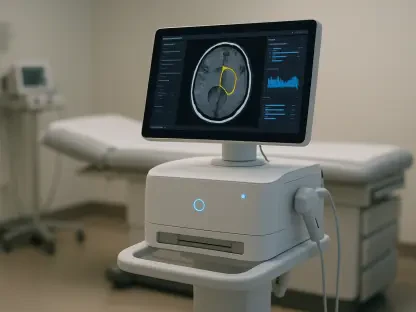The Electronic Health Record (EHR) market in Mexico is undergoing steady growth, driven by a focus on digital transformation despite substantial structural and regulatory challenges. Understanding both the current state and future potential of this sector is critical for healthcare providers, policymakers, and vendors alike. The increasing interest in EHR systems among Mexico’s healthcare institutions underscores the necessity of addressing these barriers to fully realize the benefits of digitized health records.
Overview and Market Growth
The digital transformation of healthcare in Mexico has become a priority for both providers and policymakers, driving consistent growth in the EHR market. Valued at $1.26 billion in 2023, the market is projected to reach $1.66 billion by 2030, reflecting a compound annual growth rate (CAGR) of 4.0%. This growth is primarily concentrated in urban hospitals and academic health systems, which benefit from robust funding and advanced technical capabilities. These institutions are at the forefront of implementing sophisticated EHR systems, allowing for efficient data management and improved patient care.
However, the success of these urban and academic health centers contrasts sharply with the challenges faced by smaller, rural providers. The fragmented nature of Mexico’s healthcare system, consisting of major public institutions like the Mexican Institute of Social Security (IMSS) and the Institute for Social Security and Services for State Workers (ISSSTE), alongside numerous private providers, complicates the cohesive adoption of EHR systems. This disparity between different segments of the healthcare system highlights the need for a more unified approach to digital health initiatives.
Structural and Regulatory Challenges
Despite promising growth prospects, Mexico’s fragmented healthcare system presents substantial hurdles to the widespread adoption of EHR systems. The coexistence of numerous public and private healthcare providers creates a complex environment for implementing a cohesive EHR strategy. Public institutions such as IMSS and ISSSTE operate alongside a variety of private providers, further complicating efforts to deploy EHR systems on a large scale. This fragmentation restricts the seamless integration of digital health records, impeding the overall efficiency of healthcare delivery.
Financial constraints also play a significant role in hindering EHR adoption. Survey insights reveal that 98% of respondents identified the lack of dedicated EHR funding programs as a primary barrier. This financial limitation is particularly acute in smaller hospitals and community clinics, which often lack the resources to transition from paper-based records or fragmented legacy systems. Additionally, resistance to change among clinical staff, exacerbated by significant IT workforce shortages, further complicates the implementation of EHR systems. This reluctance to adopt new technologies reflects broader challenges in digital literacy and training within the healthcare sector.
Key Barriers to Adoption
Financial constraints are not the only obstacle. An overwhelming 89% of survey participants pointed to resistance to change among clinical staff as another major barrier. This resistance is often rooted in insufficient training and a lack of familiarity with digital tools. The shortage of skilled IT professionals to guide and support the transition exacerbates these challenges, making it difficult for healthcare providers to fully leverage the capabilities of EHR systems.
Data privacy concerns constitute another significant barrier to EHR adoption. With 91% of respondents expressing worries about data privacy and security, compliance with Mexico’s personal data protection laws is a pressing issue. Ensuring the security and confidentiality of patient information is paramount, and any breaches or lapses could undermine trust in digital health records. This emphasis on data protection necessitates rigorous safeguards and advanced cybersecurity measures to protect sensitive health information.
Absence of a Unified National Strategy
The lack of a unified national digital health strategy is a critical obstacle to cohesive EHR implementation. An overwhelming 97% of survey respondents highlighted this deficiency as a major barrier. The fragmented regulatory oversight across various government agencies further complicates efforts to develop and implement a standardized approach to EHR systems. Without a centralized authority to coordinate these initiatives, the potential for duplication of efforts and inconsistent standards increases.
This lack of coordination is particularly problematic in rural and underserved areas, where the need for EHR systems is often most acute. Smaller healthcare providers in these regions struggle with limited financial and technical capacity, making the transition to digital records particularly challenging. A unified national strategy could facilitate the allocation of resources and support necessary for these providers to adopt EHR systems, ensuring more equitable access to the benefits of digital health records.
Regulatory and Policy Landscape
Mexico’s digital health regulatory environment is still in development, with no single, overarching framework governing EHR deployment. Several intersecting policies influence the landscape, including the Federal Law on Protection of Personal Data Held by Private Parties and the Ministry of Health’s updated Appendix X (2023). The Federal Law mandates stringent patient data protections and requires informed consent for data processing, reflecting a commitment to aligning with international best practices.
Moreover, the updated Appendix X provides new regulatory guidance on Software as a Medical Device (SaMD), impacting the classification and monitoring of EHR platforms. However, the absence of a centralized digital health authority complicates vendor certification, interoperability standards, and coordinated national deployment. Aligning these various regulatory frameworks with international standards is crucial for ensuring that Mexico’s EHR systems can effectively integrate with global healthcare infrastructure.
Interoperability and Infrastructure Development
Efforts to enhance interoperability within the Mexican healthcare system are gaining momentum, particularly within larger public institutions like the IMSS. The IMSS has developed significant HL7 messaging infrastructure and maintains an extensive EMR database with over 53 million patient records. These advancements aim to facilitate secure data exchange between fragmented public and private health systems, enabling more comprehensive and coordinated care.
Despite these efforts, about 95% of mid-sized and rural providers still lack the digital infrastructure necessary to participate in national data exchanges. This deficiency inhibits real-time patient information sharing and hinders cross-system coordination. Addressing these infrastructure gaps is essential for achieving seamless interoperability and ensuring that all healthcare providers, regardless of size or location, can benefit from the efficiencies offered by EHR systems.
Strategic Investment and Workforce Development
Strategic investment in digital infrastructure, workforce development, and scalable solutions is essential for addressing the unique challenges posed by Mexico’s fragmented healthcare system. Doug Brown, Founder of Black Book Research, emphasized the necessity of substantial investment in these areas to achieve sustainable digital transformation in healthcare. Institutions must implement advanced privacy safeguards, fortified cybersecurity protocols, and adhere to international digital health standards to facilitate rapid EHR adoption.
Workforce development is particularly critical in overcoming resistance to change and addressing the IT workforce shortage. Training programs aimed at enhancing digital literacy among healthcare staff can help mitigate resistance and ensure that clinical personnel are well-equipped to utilize EHR systems effectively. Additionally, investing in the recruitment and retention of skilled IT professionals is vital for providing the necessary support and guidance during the transition to digital health records.
Key Players in the Market
Several key vendors have established strong presences in Mexico’s hospital sector, offering comprehensive EHR solutions tailored to the specific needs of Mexican healthcare providers. Among them, Tesi Group, InterSystems, and Dedalus are notable for their integrated clinical, administrative, and financial capabilities. These vendors have earned high user satisfaction ratings for their advanced interoperability and robust functionality.
Local and regional vendors also play a significant role in the ambulatory and physician practice market space. Solutions such as eVitalSoft, SISNova, SalusOne, ClinicCloud, EVA Health, and Alephoo provide tailored tools for general practitioners, specialists, and outpatient providers. These vendors cater to the unique requirements of smaller clinics and mid-sized healthcare facilities, offering user-friendly interfaces and compliance with data protection regulations. Their presence underscores the importance of having a diverse range of solutions to meet the varying needs of Mexico’s healthcare landscape.
Strategic Path Forward
The Electronic Health Record (EHR) market in Mexico is experiencing consistent growth, spurred by an emphasis on digital transformation despite facing significant structural and regulatory hurdles. It’s crucial for healthcare providers, policymakers, and vendors to grasp both the current landscape and future potential of this sector. A growing interest in EHR systems among Mexico’s healthcare institutions highlights the need to tackle these obstacles in order to fully harness the advantages of digitized health records. Addressing these challenges would not only streamline operations but also improve patient care and data management. As technological advancements continue, staying ahead in the EHR market will require ongoing collaboration and innovation from all stakeholders. This concerted effort will ensure that the Mexican healthcare system can effectively leverage digital tools to enhance overall healthcare delivery and outcomes, ultimately benefiting patients, providers, and the broader healthcare ecosystem.









